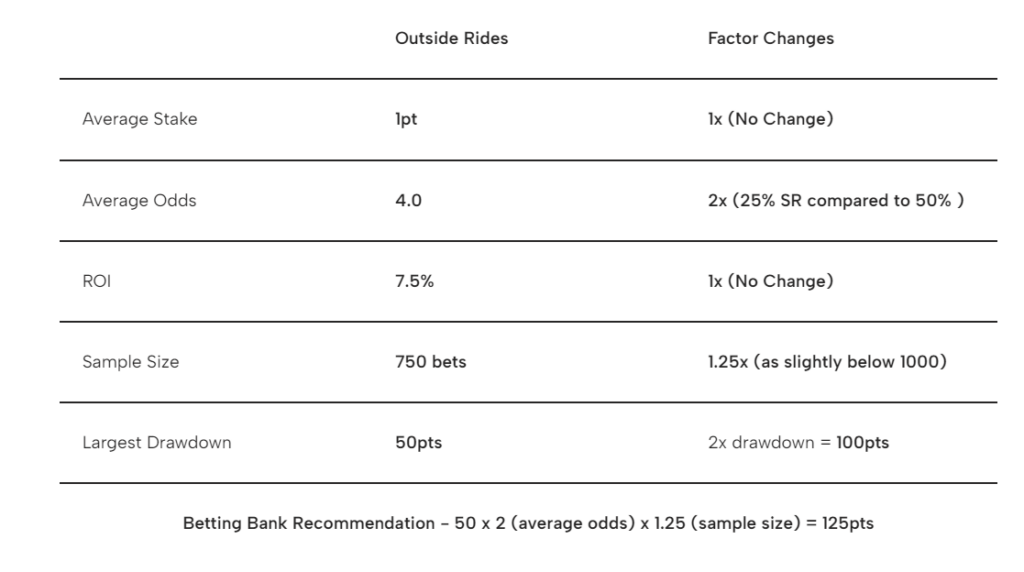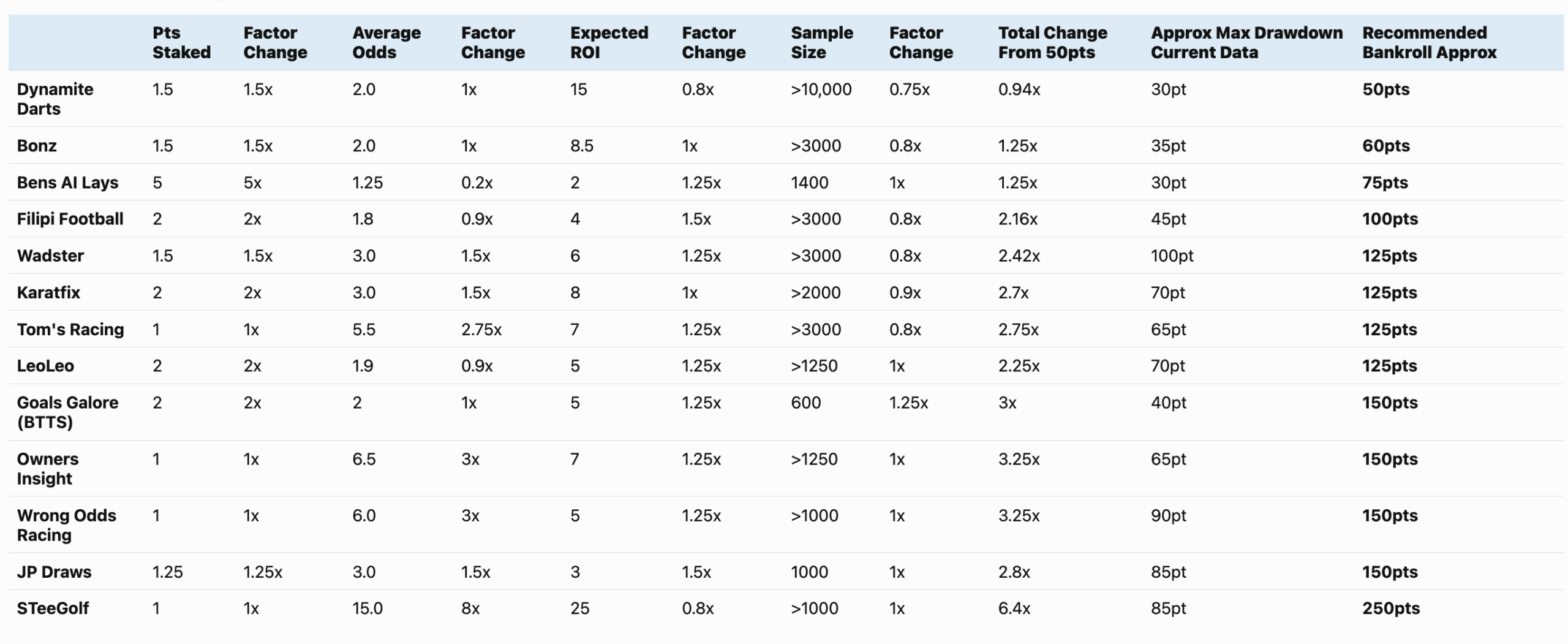So how do we allocate funds so that we’re able to build our profits consistently and sustainably? This is where bankroll management comes in.
Betting Bankroll
To keep your betting sustainable and stress-free, it’s important to manage your betting bank wisely and allocate funds responsibly.
First, figure out how much you can comfortably set aside for betting without risking financial trouble. Your betting bank should be large enough to handle potential losses.
Don’t underestimate the potential for drawdowns based on past performance. To survive losing streaks, it’s crucial to be cautious. You might want to have separate bankrolls for each tipster to ensure you have enough funds for each one.
There’s no hard rule for how big your bankroll should be per tipster, but you should base the number of points you allocate on a few key factors, which we’ll discuss next.

What determines by betting bank per tipster?
The optimal betting bank for a tipster is determined by several factors:
- Average Stake: The average bet size used by the tipster.
- Average Odds: The average odds of the bets placed by the tipster.
- Return on Investment (ROI): The percentage of profit generated by the tipster over a given period.
- Sample Size: The number of bets made by the tipster.
- Largest Drawdown: The maximum loss incurred by the tipster at any point in their history.
As a general rule, a betting bank of 50pts is considered ‘safe‘ for a tipster with an average stake of 1pt, average odds of 2.0, ROI of 5-10%, and sample size of 1000 bets.
Case Study 1: Optimizing Betting Bank for Wadster Service: A Detailed Approach
Let’s then apply this to my tipping service, making adjustments from those baseline figures to give you an overall bankroll in pts that’s ‘safer’.
1. Adjusting for Higher Stakes and Odds
– We begin with a standard 50pt betting bank as a starting point.
– Stake Adjustment: My average stake is 1.5pts, exceeding the standard 1pt. This warrants a 1.5x multiplier to account for the increased risk exposure per bet.
– Odds Adjustment: My average odds are 3.0, higher than the standard 2.0. This means the implied strike rate of bets would be lower at 33% (3.0) compared to 50% (2.0) so needs a 1.5x multiplier to reflect the increased volatility.
2. Accounting for Lower ROI:
– The historical 3% ROI is lower than our baseline, so you’ll need a stronger bankroll to handle potential downswings. To make up for the lower profits, a 1.5x multiplier is added.
3. Incorporating Large Sample Size
– Over 7 years, my service has racked up over 2000 bets, giving us a high sample of historical data. This sample size makes our results more reliable and helps with better projections. Because of this strong data foundation, we use a 0.75x multiplier to reduce the calculated bankroll by 25%.
4. Cross-Referencing with Max Drawdown
– The maximum drawdown (the largest cumulative loss) experienced by my service in 2024 was approximately 75pts. Doubling this figure aligns with the recommended bankroll amount of 150pts, providing further validation for the calculated value.

Case Study 3: Outside Rides

For Outside Rides, I’ve given the table framework for the above theory which you can apply to any Bet Bots Tipster to make some adjustments to your betting bank.

Recommended Bankrolls for Bet Bot Tipsters
Here’s how you might calculate recommended bankrolls for various Bet Bot tipsters:

Other Considerations For Determining Bankroll Size
1. Risk Tolerance
Personal risk tolerance significantly influences bankroll management. Those accustomed to losing streaks and accepting high losses may adopt a more aggressive strategy. Conversely, those prioritizing safety may select more conservative bankroll sizes. The key is to determine the acceptable loss amount and adjust the bankroll accordingly.

2. Betting Volume And Speed Of Drawdown
When selecting a tipster, consider their betting volume and the potential for rapid drawdowns. While high-volume tipsters offer potential for faster profits, they also expose you to quicker losing runs. Lower-volume tipsters provide more time to adjust during losing periods and allow for a slightly higher bankroll.

3. Tipster “Form”
Adjust your betting bank based on a tipster’s performance. If their recent ROI is low, increase your bankroll to be cautious. Conversely, if they perform better during certain seasons (e.g., horse racing in summer), lower your bankroll to benefit from the higher anticipated ROI.
However, remember to act objectively and avoid drastically increasing stakes when a tipster is performing well, as this can lead to reversal of profits. Subtle adjustments based on understanding a tipster’s past results can optimize your profit.

Conclusion
Betting bankrolls are never the most exciting point of discussion but it can make or break your own betting in terms of application. This makes it an important consideration for anyone building a betting tipster portfolio.
This ties into our next article, which is all about combining what we’ve learned about betting priorities and bankroll management to create your own Bet Bots Portfolio.